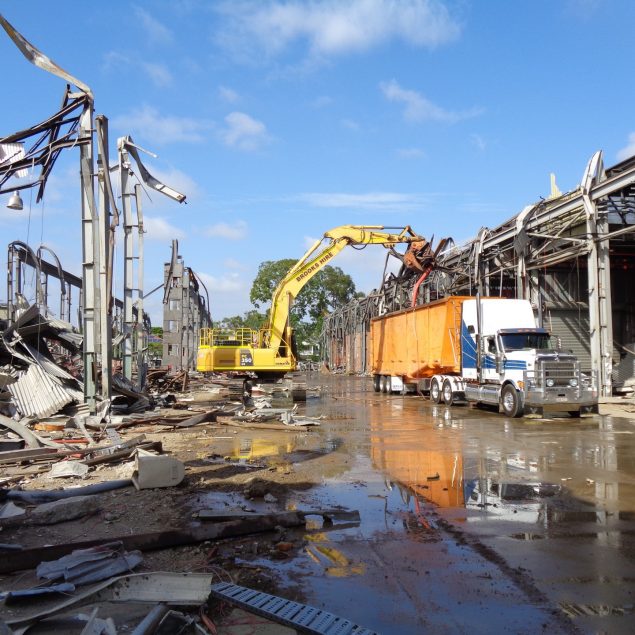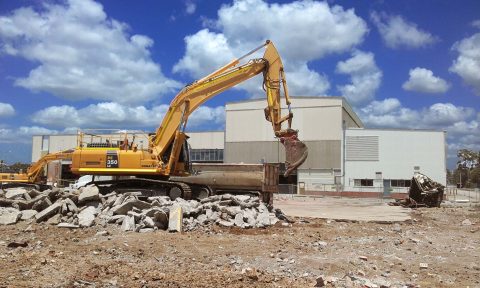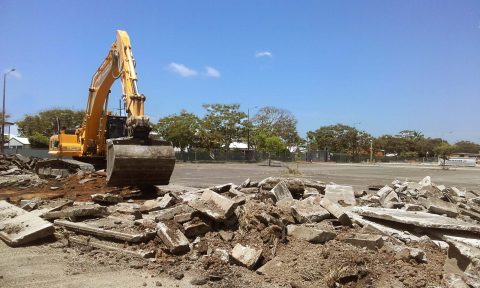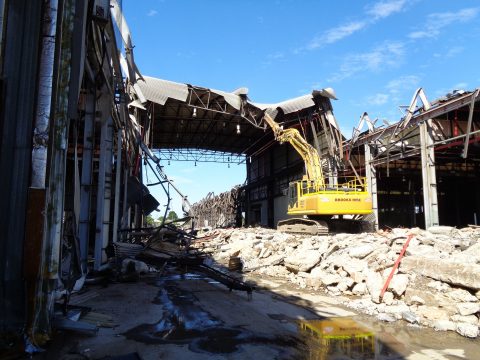Energex is a subsidiary of Energy Queensland Limited, a state government-owned corporation. Energex builds, operates and maintains the electricity distribution network in the growing region of South East Queensland.
Energex’s property portfolio included a 6.4ha site located in Banyo, Queensland. Since the 1950s until 2007, had been used as an electrical transformer refurbishment facility. The Queensland Environmental Protection Authority (EPA) listed the property on its Environmental Management Register as a site that required treatment because of its use for oil storage over its five-decade operational history.
Energex had since relocated their operations and facilities to other premises and the existing site had become redundant. Energex engaged McMahon Services to remediate the site for sale and development, and ultimate removal from the EPA Register.
Scope of Work
The multi-disciplinary project required extensive works in asbestos and hazardous waste remediation, mechanical demolition, earthworks and soil remediation, with a particular emphasis on transformer remediation. Initial works involved the removal of all buildings, pavements and services. All buildings were first internally stripped. As the buildings contained both friable and non-friable asbestos, building structures were fully encapsulated and remediated under friable asbestos conditions where required. 7t of friable and 170t of non-friable asbestos, 500m of high voltage and low voltage cabling, all transformers and electrical equipment, 500L of paints, thinners and solvents, and 5,000L of waste oil from an underground storage tank was removed and transported offsite to approved EPA waste receiving stations.
After the strip out, the five buildings with a combined floor area of 24,500m2 were mechanically demolished. This included a former factory, administration, calibration and testing buildings. Six excavators equipped with a variety of demolition shears, grabs and pulverising attachments performed the demolition. The tallest building was 18m in height requiring high-reach excavators for mechanical demolition. Along with the pavements and timber structures, 122,000t of concrete was pulverised and 1,100t of steel, aluminium and copper was recycled.
When building demolition works were completed in each area, ground remediation works commenced. Approximately twenty separate areas on site were identified as containing contaminated soils totalling 55,000m3.
Hazardous materials remediated included heavy metals, recoverable hydrocarbons, polynuclear aromatic hydrocarbons, tetrachloroethene, arsenic and 9,000m3 of asbestos containing soils. All contaminated soils were transported to EPA approved landfill facilities.
Bulk and detailed earthworks included the reinstatement of excavated areas with imported clean fill material and compacting to 95% dry density standard under Level 1 Geotechnical sampling and supervision. A significant number of foundation piles were demolished to 1.5m below ground level and the underground oil storage tank was also removed.
In total, 160,000m3 of earthworks were required to remediate the site.
The project was completed over 45,000 work hours. With a peak workforce of 32 including labour hire and one Indigenous participant. Works were completed on time and on budget to a revised program, extended predominately due to the multitude of unknown ground conditions including arsenic identified soils, and operational and redundant services located across the site.





